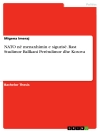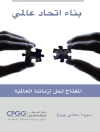With some 50 million people living under duress and threatened by
wars and disasters in 2012, the demand for relief worldwide has
reached unprecedented levels. Humanitarianism is now a
multi-billion dollar enterprise, and aid agencies are obliged to
respond to a range of economic forces in order to ’stay in
business’.
In his customarily hard-hitting analysis, Thomas G. Weiss offers
penetrating insights into the complexities and challenges of the
contemporary humanitarian marketplace. In addition to changing
political and military conditions that generate demand for aid,
private suppliers have changed too. Today’s political economy
places aid agencies side-by-side with for-profit businesses,
including private military and security companies, in a marketplace
that also is linked to global trade networks in illicit arms,
natural resources, and drugs. This witch’s brew is simmering
in the cauldron of wars that are often protracted and always costly
to civilians who are the very targets of violence. While
belligerents put a price-tag on access to victims, aid agencies
pursue branding in a competition for ’scarce’ resources relative to
the staggering needs. As marketization encroaches on traditional
humanitarianism, it seems everything may have a priceÑfrom
access and principles, to moral authority and lives.
Innehållsförteckning
Figures vi
Abbreviations vii
About the Author ix
Foreword by Hugo Slim xi
Acknowledgments xv
Introduction 1
1 Responding to Humanitarian Demands 18
2 The Contemporary Landscape: Need and Greed 56
3 Coordination vs. Competition in an Unregulated Market 96
4 Market Distortions from Above and Below 123
5 The Push and Pull of Coming to the Rescue 143
6 What Next? 157
Notes 181
Suggested Reading 212
Index 218
Om författaren
Thomas G. Weiss is Presidential Professor of Political Science and Director of the Ralph Bunche Institute for International Studies at the City University of New York Graduate Center.












